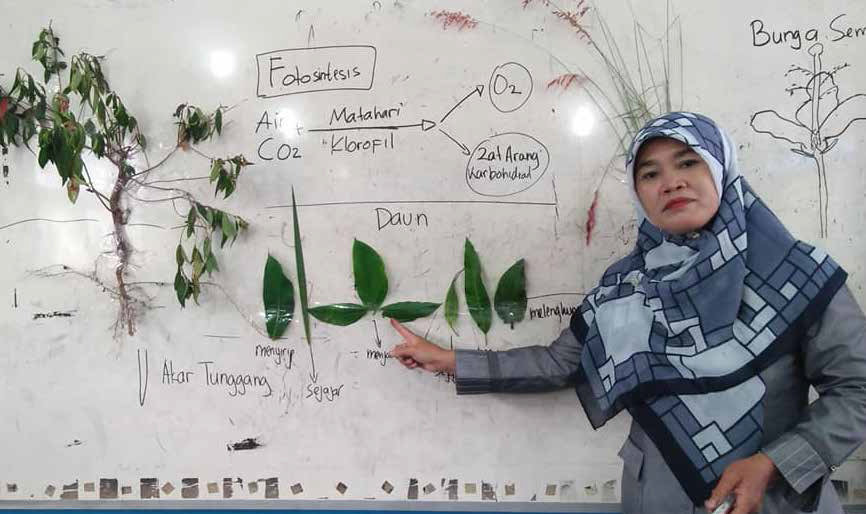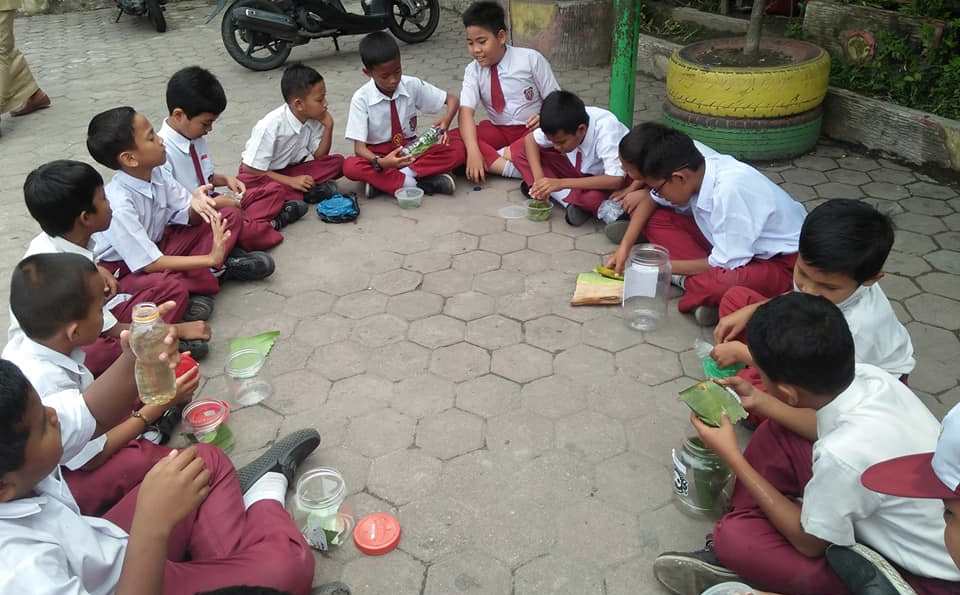Tanoto Foundation partner teacher applies creative MIKiR method in class, helps students learn better

People who enter Tri Heni Endang Rachma Pamiluwati’s fourth-grade class at SDN 25 Pekanbaru in Riau might be confused at first – there are always objects which look out of place in her classroom.
One day, it is rice, sugar, flour and measuring scales. On another day, you might see caterpillars, tadpoles and butterflies.
Getting her students to bring these unusual objects to class is all part of the teacher’s efforts to encourage them to learn actively – the rice, sugar, flour and measuring scales are meant to teach the students about lengths and weights, for example.
As a Regional Facilitator for Tanoto Foundation’s PINTAR program which aims to improve the quality of learning in Pekanbaru, Tri Heni rarely runs out of ideas for creative lessons in the classroom, especially after she has attended a MIKiR training session.
Run by Tanoto Foundation, MIKiR emphasizes the four principles of ‘Experiencing and observing, Interacting, Communicating and Reflecting’ during creative lesson planning.
MIKiR is part of the PINTAR program campaign in supporting active learning in the class. The expected results is students have more critical thinking skills about the lesson they received.

“The MIKiR method lets teachers teach lessons while the children experience and observe. After this, the children deliver the results of their observations, by reflecting with their friends,” said Tri Heni.
The method makes the learning process more focused and also provides a unique and memorable experience for the teacher and students.
As an example, to make learning about metamorphosis more interesting, Tri Heni asks her students to observe caterpillars and frog eggs over five days.
By the end of the five-day observation period, some of the students did not want to take the animals home because they had changed into other animals, Tri Heni says.
“The caterpillars had changed into butterflies after emerging from cocoons. Meanwhile, the eggs which had been originally mistaken for frog eggs turned out to be mosquito eggs, and larva hatched from them instead of tadpoles. The students learned a lot about metamorphosis from these observations,” she said.
Tri Heni says the students in his class have become much more enthusiastic to learn since he began applying the MIKiR method in class.
More importantly, their capabilities to understand subjects have become a lot better, which are the best assets for learning new subjects, Tri Heni says.
“I don’t have any unusual grand ambitions – I want to be a teacher who produces extraordinary students,” she says.
One of the PINTAR program effort to encourage teacher implementing the active learning is disseminate this good practices to other schools around so other teachers can imitate or develop their own learning creativity in classroom.

Leave a Reply